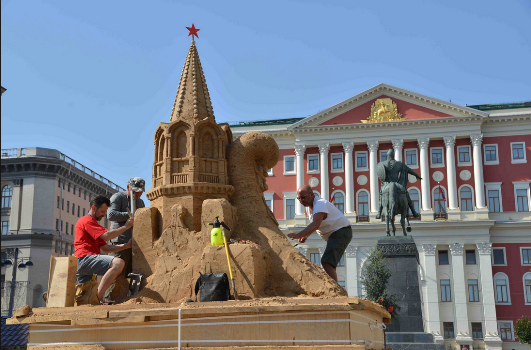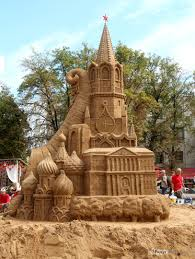Last week one of my New York compatriots, an immigrant from Russia, flew to Moscow to visit her relatives and friends. Her first e-mails from the Russian capital, which she sent to New York on the day of her arrival, indicated her shock: everybody was asking her the same question: “Why do Americans hate Russians so much that they ordered Ukrainians to start the war and to kill Russians?” When my friend tried to refute this opinion, the others didn’t trust her. They insisted that she had been brainwashed by American propaganda.
That was the shock of her first day in Moscow. But on the second day she experienced even bigger surprise. The aggressive anti-Ukrainian and anti-American mood of Muscovites overnight changed to an atmosphere of cheerful festivity. The reason:
The first Moscow International Jam Festival celebrating the sweet delicacies of all tastes and colors was held on August 8 – 17. Numerous workshops, contests and games were offered for those eager to participate. On Saturday, over 1.5 million people took part.
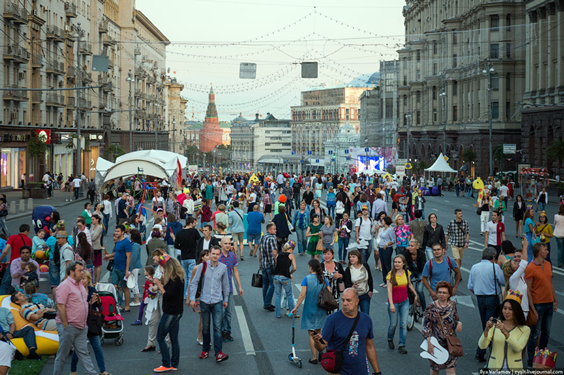
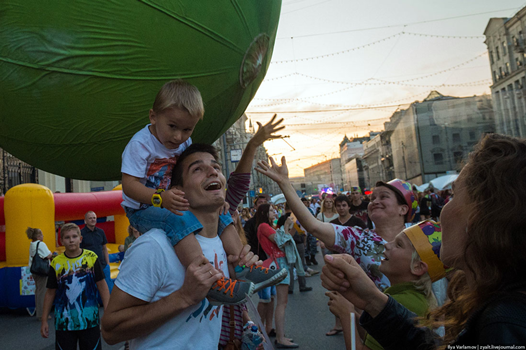

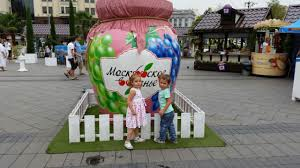
Nineteen of the main streets and squares of Moscow were turned into gardens with tropical trees and live peacocks, Eastern bazaars, picnic areas, concert halls, ball rooms, Russian traditional samovar tea rooms and master-classes of preparing jams and preserves of the most exotic varieties. (Stopping traffic of even one Moscow street for a reason of political demonstration is almost never permitted.) It was the first time in history when during the entire weekend so many of Moscow streets were closed for traffic.
At 3.00 PM, Saturday on Tverskaya Square, Moscow’s mayor solemnly cut “the biggest cake with jam” (three meters in diameter). It was reported that about a thousand people shared pieces of the cake.
From 9:00 PM to 11:00 PM “the night of jam eaters” took place. The participants were blind tasting jams of the most exotic ingredients. The contest was held in four rounds of 30 minutes each (eight participants in each round and three bowls each). In each round, the winner received the grand prize – a year’s supply of jam.
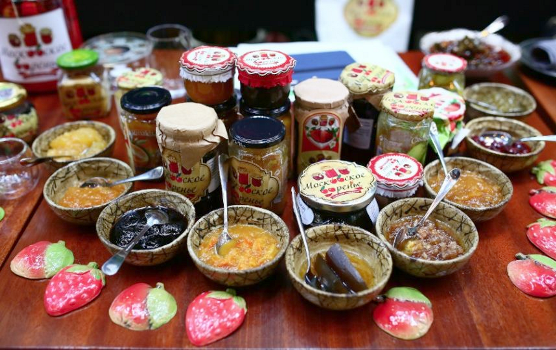
Below is the video of the August 17 celebration in the Tverskaia Street, the main street of Moscow.
[youtube s4IMt6_yLjA]
It may seem there was nothing political about this festival. People just had their chance to relax in the middle of the great political tension. But the central dance event of the Festival was named “Sevastopol waltz”. (Sevastopol is the biggest city in Crimea, the site of the Russian military fleet).
And in front of Moscow City Hall a five meter ugh sand castle called “Cornucopia” was built. Cornucopia leans on a sand replica of the Kremlin, implying that the Kremlin is the source of the abundance for Russia.
Moreover, instead of the two-headed eagle from the Russian coat of arms of the tsars’ time and the nation’s current symbol, placed on the top of the Kremlin’s tower was the red star, from the era of the Soviet Union.
